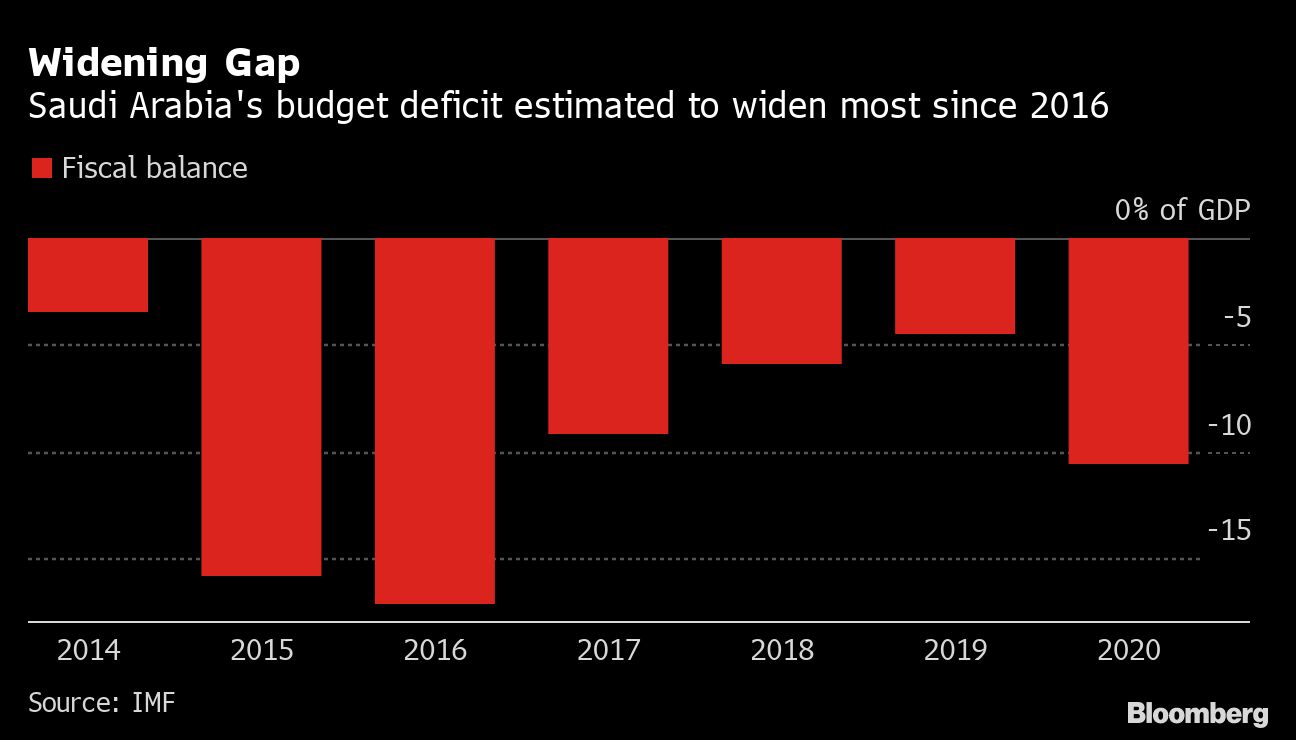Saudi Arabia outlook cut to negative by Fitch on oil, virus

Published 09 Nov,2020 via Bloomberg Politics & Policy - Saudi Arabia’s outlook was cut to negative from stable by Fitch Ratings as the coronavirus pandemic and lower oil prices clobber the kingdom’s finances.
A negative outlook means the next move on the credit rating may be a downgrade to the lowest level since Fitch began assessing the kingdom in 2004. The sovereign is still at A, its sixth highest rating, and on par with Japan and Iceland, according to a statement on Monday.
Fitch last downgraded Saudi Arabia in 2019 and has its assessment one notch above S&P Global Ratings and one level lower than Moody’s Investors Service.
The revision for Saudi Arabia “reflects the continued weakening of its fiscal and external balance sheets” that’s been “accelerated by the coronavirus pandemic and lower oil prices, despite the government’s strong commitment to fiscal consolidation,” said Fitch analysts including Krisjanis Krustins.
Saudi Arabia’s Ministry of Finance focused on the ratings affirmation. “Despite the negative outlook, the kingdom’s ratings have demonstrated notable resilience with three consecutive rating affirmations by the three major credit rating agencies since the onset of the crisis in March 2020,” it said.
The Arab world’s largest economy is headed for a contraction this year amid a collapse in oil prices and the spread of the coronavirus pandemic. Its budget shortfall is estimated to widen to 12.8% of gross domestic product from 4.5% in 2019.
Saudi Arabia’s dollar bonds were stronger on Monday as the prospect of a U.S. presidency under Joe Biden bolstered demand for risky assets. The yield on the kingdom’s security due 2055 fell 6 basis points to 3.16%.
More from Fitch:
- Government debt will reach 35% of GDP by the end of 2020 and 41% by 2022, from 23% last year
- Debt issuance and reserve drawdowns will drive down sovereign net foreign assets to 60% of GDP by 2022 from about 72% in 2019-2020
- Fiscal deficits will narrow to about 8% of GDP in 2021 and 5% in the following year, assuming Brent crude recovers to an average $50 per barrel by 2022 and Saudi oil production grows to 9.7 million barrels a day
- Government reserves, including central bank deposits, are seen dropping to 16% of GDP this year and 12% of GDP in 2022
(Updates with details from second paragraph)
For more articles like this, please visit us at bloomberg.com
©2020 Bloomberg L.P. All Rights Reserved. Provided by SyndiGate Media Inc. (Syndigate.info)
DISCLAIMER: This content is provided to us “as is” and unedited by an external third party provider. We cannot attest to or guarantee the accuracy of information provided in this article from the external third party provider. We do not endorse any views or opinions included in this article.

Abeer Abu Omar and Matthew Martin